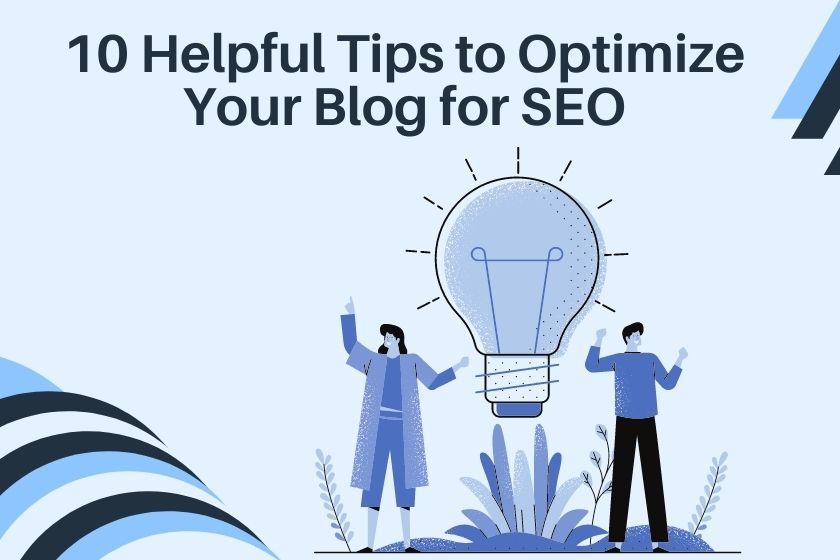Most blogs get the majority of their visitors from organic search channels, so every blogger must know how to optimize their blog for SEO. Here are the 9 tips to optimize your blog for SEO:
- Align your content with search intent
Search engines exist to meet the search intent of their users. For example, Google, as a business, must serve content to its users that answer their question comprehensively. If not, their users may move to other search engines.
You must write long-form content that covers a topic comprehensively. This way you answer more questions and target more keywords. But make sure that every time you write content, keep this question at the back of your mind – Does this meet the search intent?
2. Identify content gaps
We all have faced this, we Google something, hoping for a solution to our problem, but we don’t find it! We check the 2nd page and then the third, and then give up. That’s frustrating, isn’t it?
Even Google hates that. It wants to serve answers to every single search query. But what happens when no website has the answer, Google pulls information from forums or serves related answers. In other words, Google tries to fill the gap in its content repository with fluff.
Try to put Google out of its misery by writing that content. You will rank fast and get loads of traffic for that search query without a doubt. Here’s where topic research comes into the picture. You don’t need any keyword research tools, you can find content gaps using Google.
3. Write enticing titles that drive clicks
It doesn’t matter if you have top-quality content that aligns with search intent if no one clicks on it. You want searchers to see your listing in search results pages (SERPs), and
Click on it immediately. For that, you must write kickass titles that have an emotion to them.
That’s where Coschdule’s Headline Analyzer can help. It will help you craft a headline that combines power words and emotional words with your primary keyword, making it a click-magnet.
4. Use keywords effectively
You must write for humans and optimize for search engines. This way, you ensure that your future readers find your content on search engines, and also like your content once they land on your page. Both are equally important.
While optimizing your blog for SEO, keep keywords at the center of it all. And finding the right keywords is only half the battle, you must use them in the right place. Spots like URL slug, title tags, headers, etc are the go-to places for search engines bots to understand what a particular blog post is all about.
5. Optimize for Page Speed
So you got your content right, your title is perfect, and the stage is set for your visitors. But no one comes! What happened?
Your page is too slow. Your visitors were excited to see the value you offer, but it took light-years for the page to load, so they went back to Google. And Google got a whiff of it, so to ensure its users access a faster website, it knocks you off your ranking position. Sounds like a nightmare, doesn’t it?
You must optimize your blog for page speed because it impacts your traffic influx.
6. Get an HTTPS certificate
Experts are divided on whether having an HTTPS instead of HTTP impacts rankings but as per our experience, it does big time. We limited ourselves to HTTP for a while but we did not rank well until we got an SSL certificate.
Please get one for yourself. It’s not too difficult or expensive to get the certificate – you can get it from your web host.
7. Watch out for your blog’s technical health
You don’t want to have 4xx or 5xx errors on your blog. They make for a horrible user experience. You can use Ahrefs Broken Link Checker to find any broken links on your website.
You can change the link or redirect it to another page.
8. Add internal links
Internal linking is the long-ignored cousin of backlinking. Somehow, bloggers never care about it, but it’s a powerful way to manage traffic on your website.
It helps you to provide valuable resources to your visitors which they would otherwise never know about. Also, it helps you divert traffic to your money pages. The benefits of internal linking don’t end there, it also increases your pages per session count.
Ensure that you add internal links where you can fit an anchor text contextually. Here’s a guide to internal linking that will help you with the complete process.
9. Get natural backlinks
Natural backlinks are the safest form of backlinks. Plus, you do not need to actively acquire them, you just get natural backlinks because your content is solid and other websites want their users to benefit from it.
Even though outreach campaigns are useful, they may not work for a new blog with low domain authority. So it’s best if you focus on your content and let the backlinks roll in naturally.
Conclusion
In this blog post, we showed you how to optimize a blog for SEO. Implement the above 9 steps and see how your SEO campaign improves.
Which tip did you like the most?
Related Content

